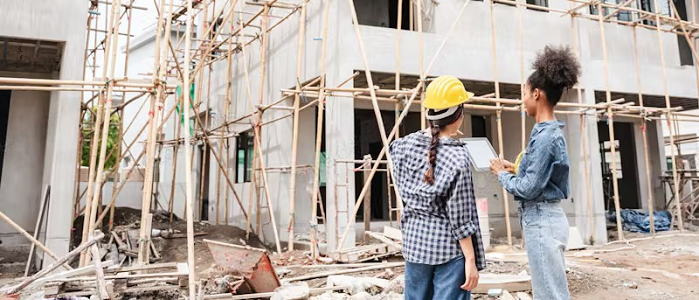Key Insights:
In this study we look at the essential concepts of restoration, reconstruction and repair for the purpose of preserving these architectural masterpieces.
We provide insight into how restoration of buildings is more than just aesthetic redemption. It also drives urban renewal, boosts economic growth and helps ensure that our cultural story is able to endure.
Learn about the intricate interplay between technology and challenge that professional are able to perform when restoring historic structures.
The financial lifeblood of rehabilitation through grants and financing is discussed, highlighting the importance of fostering knowledge in this critical area.
We stress the importance of the community and individual determination to promote an agenda for the purpose of building rehabilitation and protecting the heritage of our culture.
Contents:
- Deciphering Building Restoration
- Building Restoration’s Influence on Urban Evolution
- The Intricate Undertaking of Professional Restoration
- Overcoming Obstacles in Building Restoration
- Celebrating Restoration Triumphs Through Case Studies
- Innovation and Tech Advancement in Restoration
- Navigational Aids for Restoration Funding
- Carving a Path in Restoration Education
- What’s on the Horizon for Building Restoration?
- How to Be a Proponent in Building Restoration Initiatives
Deciphering Building Restoration
In our historical edifices is the story about time in itself. Restoration of buildings — a procedure that carefully restores architecture’s splendors, protects these stories for the future. The distinction between renovation, restoration, and repair is essential. Renovating structures modernizes them, whereas repair tackles damage, and restoration – a effort to be precise–recreates the initial state and glory, while preserving the value of culture and history.
Respect for a building’s historic art is the principle of restoration to preserve the mark left by the original craftsmen.
Building Restoration’s Influence on Urban Evolution
As time goes by, it stretches backwards with every successful building restoration and breathes life back into buildings that relive our history. This careful rebirth combines historic art with the latest technology using knowledge of the techniques and materials used in the past. The restoration strengthens heritage while highlighting its stories, and bridges the gap between urban development and the preservation of culture.
The National Trust for Historic Preservation and similar organizations are the defenders of this harmony, arguing for a blend of modernity with character, a skyline that is a reflection of the ethos of both ancestry and ambition.
The Intricate Undertaking of Professional Restoration
Restoring an old building is a task that requires precision and skill. Conservators and structural engineers study and meet the requirements of older people and are able to bring stability and heritage into one. Artists relive the past with meticulously recreated materials and matched materials making sure that every step is a tribute to the art of old.
A dance of the past and modern requires an unending dedication and meticulous attention to detail — a perfect dedication for the craft of conserving.
Overcoming Obstacles in Building Restoration
Restoring a building has its own unique challenges. It requires a committed team to rekindle the spirit of history without losing sight of the modern essentials. From re-creating ancient bricks to reimagining the long-forgotten craft it can be challenging as well as stimulating. Each challenge strengthens the determination to protect and preserve the past, while highlighting the strength of restoration specialists and their unwavering passion for the past.
Reworking the Art of Architectural Renewal
In the tangled world of restoration work, experts face a myriad of challenges. Their goal is to protect the charm of old buildings while strengthening their resiliency against the ravages of time. Specialists in old-fashioned stonework, carpentry as well as metal forging methods, skillfully restore intricate architectural elements. But their work goes beyond physical restoration They must masterfully navigate the maze of laws governing building codes and conservation laws for heritage to preserve the legacy of each building with modern standards.
Sustainability is a key component of this project. The creed of the restorers requires them to combine historic preservation and green practices and to promote the longevity of our architectural treasures as well as ecological awareness.
Expertise from organizations such as organizations like Heritage Documentation Programs often becomes an inspiration, leading the restoration efforts. They provide strategic norms and insights that allow professionals to create a harmonious mix of the old and the modern and firmly to the roots of our society.
Vignettes of Redemption in Architecture
The global landscape of restoration is brimming with inspiring stories — every structure’s revival is infused with wisdom and devotion towards the craft of restoration. From legendary Victorian estates to sanctified ancient shrines, these represent the transformative nature that restoration projects bring. They are typically collective efforts, a fusion of the private, public sector and the public come together to preserve a common heritage tapestry.
The Technological Renaissance in Restoration
The world of building renovation is ablaze with creativity that blends traditional practices with modern technology. Accurate diagnostic tools such as 3D mapping offer a new insight into the structure of a building and create precise restoration plans. Digital simulation software can predict future trajectories for restorative purposes, giving users with a glimpse of the past’s beauty through the eyes of the future. This is why technology pushes this noble art forward by offering more intelligent more efficient methods as well as preventing any possible structural declines.
Paving Financial Pathways for Restoration
The most important aspect of any recovery is the economic component, often an uphill climb to conquer. Despite this, numerous financial channels support those in this journey. Tax credits, government subsidies and philanthropic donations are just one of the methods to propel these initiatives forward. Preservation champions and cultural organizations are often the main central point of contact, encouraging support and highlighting the importance of preserving our architectural heritage, thus opening the financial pathways. People who are entrusted with historic structures might discover that becoming familiar with these financial resources is a crucial first step to revitalize their buildings.
The Academic Pillars of Building Restoration
Educational programs are the foundation for both novice and experienced restoration enthusiasts of all ages. Universities across the globe offer customized programs in historical upkeep and restoration, combining the classroom with real-world knowledge. These educational crucibles provide the future leaders with a broad understanding, ranging from the practical to preservation advocacy. Beyond academia, the internet community and the local forum provide the perfect environment for learning over time that allows both novices and experts alike to develop their talents in a group of fellow students.
Prospects and Progression in Building Restoration
The horizon is a good place to look, as restoration of buildings is advancing with tangible changes. A growing dedication to sustainable practices is now a common thread throughout the field with a greater interest in civic involvement in conservation of historic buildings. Collaborations across borders are growing as sharing of knowledge and technologies are becoming commonplace, blending restoration methods with diverse perspectives. In the future restoration can be seen as an impressive witness to the union of respect for the past with modern technology, making sure the architectural legacy of our buildings stands tall in the future.
Join the Mission to Preserve Our Architectural Legacy
The rehabilitation of old buildings is a collaborative initiative that is strengthened by the many contributions of those similar to you. Your active involvement could take many forms, such as volunteering your time, contributing funds or even being a loud proponent of preservation. All of these can be extremely beneficial to the preservation of the architectural legacy of our country.
Find your place in this noble cause by connecting with local organizations that are dedicated to heritage conservation, demonstrating your support to fundraising initiatives or by advancing your mission via social media and participation in the community. Every step you take opens the way to preserve the vigor of our built heritage to ensure that it will continue to inspire and educate the next generations. Your commitment towards the mission is crucial and will help in the efforts to restore and celebrate the buildings which represent our rich past.



Hi everyone, it’s my first visit at this site, and article is actually fruitful in favor of me, keep
up posting these articles or reviews.